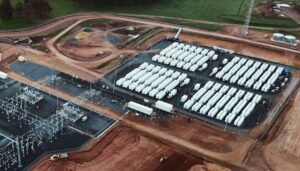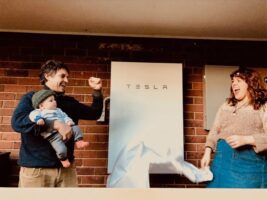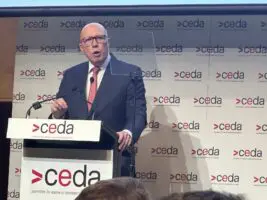To read mainstream media and listen to the political rhetoric, you’d think Australia’s energy problems could be summed up like this: the country is about to install unnecessary and costly renewables in an already oversupplied market. So, it should stop doing so.
At least, that’s how the fossil fuel industry and the federal government have been spinning the story.
But the problem is actually the other way around: Australia has too many dirty coal-fired power stations that have operated way beyond their working life, and their owners are refusing to shut them down.
That is the assessment, not of environmental groups (although they would no doubt agree), but of the largest privately-owned power generation company in the country, AGL Energy.
“(About) 75 per cent of the existing thermal plant has passed its useful life,” AGL Energy economists say in a new research paper. But they note that the generator owners do not want to shut them down because it is too expensive to do so. “At present, there is around 7 GW of surplus capacity in the NEM. The system is relying upon ageing baseload coal-fired generation.”
In the world’s two biggest electricity markets – China and the US – the governments have found an effective way of getting rid of dirty old coal-fired power stations that have operated past their useful life: they have legislated against them by imposing strict emissions standards.
Australia does not even have emissions standards. Some fairly light ones were imposed and then removed when the carbon price was introduced. Now the carbon price has gone too, and if the fossil fuel generators had their way, all energy efficiency and renewable energy policies would be gone as well.
Instead, the fossil fuel generators have got their hand out for more money. They want payments for closure. In the meantime, they have pushed for Australia’s Renewable Energy Target to be wound back or scrapped altogether, so that their earnings are not affected in the meantime.
The more renewable energy that is in the system, the lower the wholesale price falls. Independent analysis has shown that coal generators could earn an extra $10 billion or more if the Renewable Energy Target is scaled back or dumped.
What should be happening is that market regulators should be ensuring that coal generators are retired at the end of their normal life. This would allow renewables to compete in an even market – on a new build basis, wind and solar would likely get financing more easily than coal or gas. As the ANU’s Andrew Blakers pointed out last year, if all the fossil fuel capacity was retired at the normal time and replaced by renewables, Australia would be close enough o 100% renewables within two decades.
According to AGL Energy, Australia currently has around 7,000MW of excess baseload capacity – some of it siting around in mothballs and some of it operating at much reduced capacity. (AGL has previously said around 10,000, while the energy market operator reckons around 9,000MW, or more than one third of the current base load capacity is surplus to requirements).
The maths are simple: It doesn’t cost the coal plant owner much to put the coal-fired power station into mothballs, but it does cost a lot to close it down permanently – somewhere in the region of $100 million to $300 million.
The overcapacity is the result of what AGL Energy economists describe as “the trends arising from dynamic inconsistency and policy uncertainty.”
In short, that means that the fossil fuel generators have been so successful in playing one side of politics off against the other, that carbon pricing, renewable energy and energy efficiency policies are in a constant state of flux.
And none of the coal generators wants to be the first to exit the market, in case they miss out on a rebound in prices – when that happens. Better, instead, to gang up on wind and solar, or convince the government to come up with a new mechanism.
AGL Energy, itself, has bought an old clunker recently – the 40-year old Liddell coal generator that was part of Macquarie Generation. AGL, however, got this and the neighbouring Bayswater generator for such a good deal it effectively valued Liddell at zero. It will run the plant till the Tomago smelter is due to close in 2017, or earlier if needed. Or later if the market changes.
AGL Energy has advocated for various forms of policy changes to facilitate the exit of old coal generators – including payments for remediation, or possibly “capacity” payments, that could com in various forms.
It has argued against the “energy only” markets that have characterised the National Electricity Market, although this debate is also taking hold at international level. Most international agencies have rejected the arguments for capacity markets, describing them as another form of subsidy for fossil fuels.
AGL Energy says the mean age of brown power stations is 34.2 years, and the median age of black coal generators is 27.4 years respectively. “A number of the older coal plants are well beyond design life,” it notes.
“There are substantial costs associated with closing down a power station permanently – a cursory review of Annual Reports tends to indicate remediation costs of $100-$300 million.
“First-mover disadvantage costs are also material – economic theory (and game theory in particular) tells us that actions taken by any one supplier to reduce capacity will make competitors better off. However, it is the final identified barrier to exit which is most likely to be present within the Australian context: policy uncertainty.”
AGL Energy goes on to say: “Market participants are able to mothball plant at relatively low cost by comparison to the very high capital cost of retirement. And this is amplified given the option value associated with the plant’s potential to return to service with notice of only a few months notice.”
This is playing out in real life. The surge in gas prices is sidelining gas generators, so moth-balled plant like that at Tarong, in Queensland, is being brought back into operation. That will likely happen if renewables are sidelined by the Abbott government.
The recommendations of the Warburton review are to close the RET to new entrants altogether, or to allow renewables a maximum of 50 per cent of demand growth. Who would pick up the other 50%? Why, mothballed coal generators of course.
As AGL Energy notes, it’s not just the large-scale renewables that are a threat, but rooftop solar too.
The average embedded solar PV system size per installation grew by 0.9 kW to 3.9 kW in 2013 alone and households and businesses continue to install embedded generation at rates estimated to be around 50-60 MW per month – despite the explicit subsidies that were once in place largely having been abandoned.
Note: Interestingly, Industry minister Ian Macfarlane conceded on Tuesday that there was excess base load capacity. Environment Victoria, long an advocate of what some described as the “cash for clunkers” policy dumped by Labor, said:
“There is clearly an issue with the electricity market being oversupplied, but the Coalition is acting as though the only solution is to weaken the Renewable Energy Target, even though the RET will lower energy bills and reduce our greenhouse gas emissions.
“What the Coalition has failed to consider is that oversupply of the electricity market could be addressed by phasing out large, old, polluting coal-fired power stations, many of which are now surplus to requirements.
“In the past Governments haven’t wanted to talk about closure because they were worried about the lights going out. We now know that this is not a risk at all. We effectively have massive power stations operating and polluting unnecessarily.
“In Victoria we now have 2000 MW of excess capacity, which means that controversial and polluting power stations like Anglesea and Hazelwood could both be retired immediately with no impact on energy security.”
Greens leader Christine Milne said:
“Minister Macfarlane has said that there is a surplus of 9000 megawatts in the system and that’s why he needs to reduce renewable energy. He wants to make existing coal more viable.
“Wrong, Minister. This is the best opportunity we have to phase down coal fired power, without running any risk to energy security.
“The polluting fossil fuel sector just isn’t viable in the age of cheap, sustainable renewables, but the Abbott government is doing everything it can to protect the profits of the old industry, at the expense of new jobs in solar and wind.
“The Renewable Energy Target needs to stay as it is. There was a cross-party agreement not to touch it until 2020 so the sector could have investor confidence.









